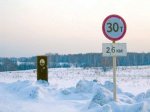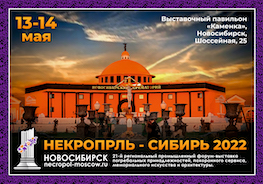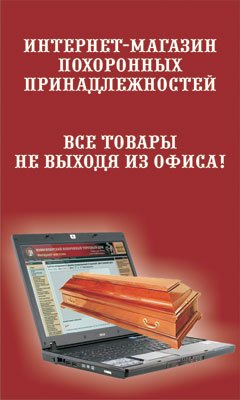Modern Russian roads sometimes seem to be the alleys of death: road-side wreaths, memorials and crosses – symbols of fatal tragedies - appear here and there on both sides.
From History
In ancient times wooden crosses, often with a 2 side covering , were settled down alongside roads in Rus (Russia) for travelers’ obeisance and for guarding trade routes, because many troubles could occur to the travelers: from robbers to nasty weather. Crosses with covering and shrine, sometimes with icon, lampad or candle inside, standing along roads were mainly guarding, but in some regions memorial crosses were met. For example, usually killed post-boys and cabmen were buried along roads – on the place of their death, and memorial crosses were put down on their graves.
Reincarnation of traditions. “Mausoleum” along road
Road-side memorials and wreaths are often found outside a city, and very rare inside one. The quantity of such memorials in the country is growing more and more.
They say, the fashion for road-side memorials as a memory at the places of car accidents appeared not so long ago – 10-15 years ago – and it is considered to be the wholly Russian tradition. But this is only and ignorant opinion. Road-side crosses are met all over Europe, especially they are spread in Germany. It is hard to affirm the origin of this tradition. But every day people die in the accidents. Their beloved ones are in sorrow, some of them go through pain and grief quietly, inside themselves, and the others are willing to share their sorrow. And road-side memorials are the attempt to show it. But here is a question: do other people wish to know about other’s grief and accept even a part of it?
Road-side crosses and memorials
Recently mounted memorials are in the shape of crosses made of many different materials. These “masterpieces” can be made of car tyres, plastic bottles and even some parts of car body. In winter 2001 on one of the streets of Novokuznetsk city appeared an ice memorial, it was carved from a rubbled ice. In spring the ice melted, but the memory of the unique monument showing grief remained in hearts of citizens.
Often happens that relatives mount a table with a bench by the road wh ere they can gather and speak about the deceased. In Soviet times standard steel obelisks looking like gravestones were popular, but the most spread memorials are those with a fixed steering wheel, or wheel or just a tyre. Road-side memorials are frequently settled near warning traffic signs for highlighting their meaning, and more often wreaths are just fixed to a traffic lights post or tree standing close to the place of accident.
But sometimes even greater constructions appear – chapels, big sculptures made of stones or boulders with memorial plates, surrounded by forged gratings. People used to call such memorials as “Mausoleums”.
But expediency of such things is questionable. All along the way memorials and crosses devoted to car accident deaths appear against the background of nature – not a pleasant picture for travelers. These memorials though are something intimate. People driving past start thinking about these deaths. And even specialists say that the risk of car accidents increases the roads were road-side crosses and memorials stay.
STSI (State Traffic Safety Inspectorate) officers do not have agreement of opinion. The first ones suppose that there is nothing good to say about road-side memorials except the thing that they demonstrate the final result of driving inaccurate, but still traffic signs are the better warning. The others are strictly against road-side memorials because every construction on the roadside diverts driver’s attention. But claims for mounting such constructions can be issued only if the memorials are settled on a roadside and detain traffic or close vision. Unfortunately it happens often. Memorials set up without any coordination usually embarrass the work of public cleansing vehicles. Sometimes workers who accomplish roadside happen to ignore a surrounding territory of memorials, because of fear or in order not to bother souls of deceased. As a result these places are snowbound, land is scrubby, in time the width of the road gets narrower, vision gets worse and finally they become the places of heightened danger. From the point of view of Orthodox church a gravestone or memorial should be settled on the bury place, and not on the place of death. No one sets memorials on the spot to those who die at home or in hospital. For example, Orthodox crosses appeal to stop and cross oneself and it is not reasonable to do this in a danger zone with traffic. Roadside memorials are not blessed by the church. Churchmen are solid in their opinion that road-side memorials and wreaths are just a waste of money and made for decoration, they are pagan and do not do any good to the soul of deceased.
More than that there are rumors about existing graves of people along roads who died in the accidents. And people say that because these memorials are placed nearby. Anyway, if there are any rumors regarding such graves, even if such graves exist, this is against the law. According to the Act Concerning Burial and Funeral Business it is possible to bury a person only at a specially prepared place at a cemetery.
Edited by Pharos International











